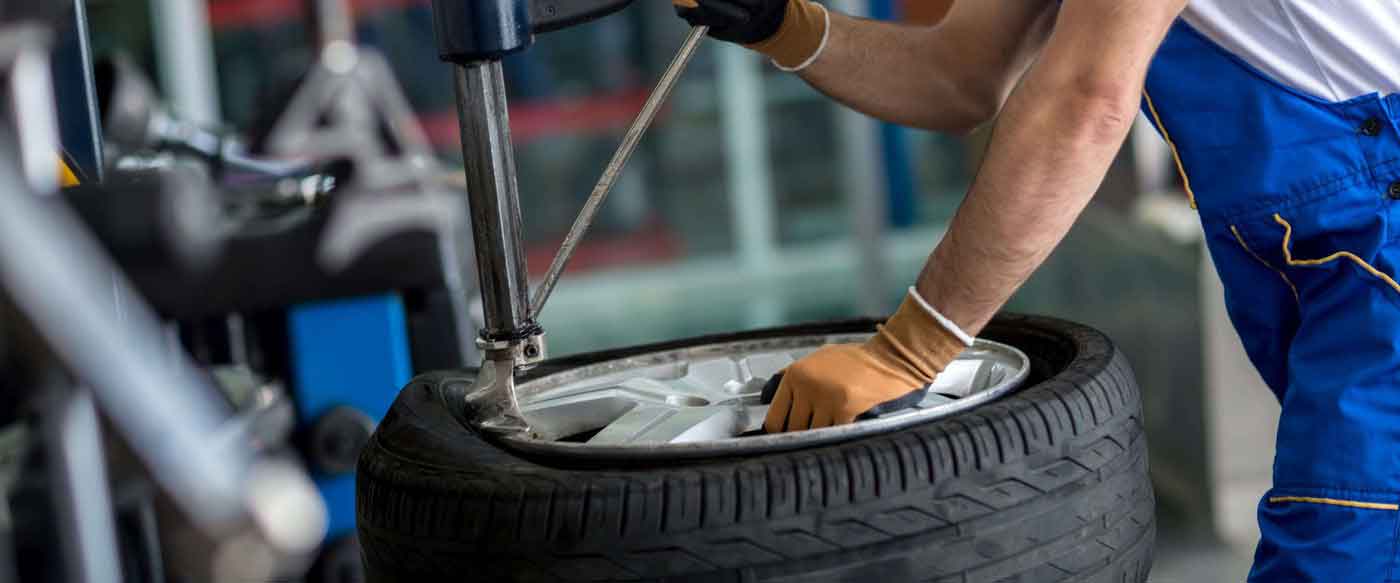Morris Tire: Trusted Tire Solutions
Morris Tire: Trusted Tire Solutions
Blog Article
Specialist Overview to Tire Fixing: Every Little Thing You Required to Know
Browsing the world of tire repair can be a complicated job for numerous car owners. From identifying the usual reasons of tire damage to understanding the intricate actions entailed in fixing a puncture, there is a wealth of expertise to comprehend. In this extensive guide, we will certainly unwind the complexities of tire repair, losing light on the numerous kinds of repair work kits readily available and offering useful insights right into when it may be time to bid farewell to a worn-out tire. Stay tuned as we dig deeper into the nuances of tire maintenance, furnishing you with the necessary knowledge to guarantee your tires stand the examination of time.
Usual Sources Of Tire Damages
What are the typical reasons that lead to tire damages, influencing vehicle efficiency and safety and security? Tire damage can happen as a result of various elements, with among the key reasons being incorrect rising cost of living stress. Under-inflated tires can cause extreme warm build-up, resulting in raised wear and potential blowouts. On the other hand, over-inflated tires can cause reduced traction, unequal wear, and a harsher experience.
One more typical reason for tire damages is poor step deepness. Damaged footsteps can endanger grip when traveling, specifically in wet or slippery conditions, boosting the threat of accidents. Additionally, driving over craters, particles, or sharp things can penetrate or create cuts in the tire, damaging its framework and possibly creating a level.
Moreover, incorrect wheel positioning and unbalanced tires can also contribute to tire damage. Misaligned wheels can lead to irregular wear patterns, while out of balance tires can create resonances, influencing both the vehicle's handling and the tire's longevity. Normal upkeep checks and timely repair work can help mitigate these usual sources of tire damage, ensuring optimum automobile efficiency and security.
Kinds Of Tire Repair Packages
To attend to the consequences of common sources of tire damage talked about previously, it is important to comprehend the different kinds of tire fixing sets offered for vehicle proprietors. There are mainly three kinds of tire repair work packages frequently utilized: plug packages, spot sets, and combination fixing sets.
Plug kits are a fast and easy solution for fixing small slits triggered by nails or screws. They contain a T-handle device and rubber plugs that can be inserted right into the puncture to secure the hole effectively. Patch sets, on the other hand, are better for bigger leaks or cuts in the tire. These packages include a spot and adhesive product that is related to the internal lining of the tire to cover view it now the broken location safely.
Combination fixing kits use the benefit of containing both plug and patch parts, providing a detailed solution for a variety of tire damages circumstances. It is very important for car proprietors to acquaint themselves with these various types of tire repair work sets to be planned for any unexpected tire problems when driving.

Actions to Fix a Tire Puncture
Repairing a tire leak calls for a methodical method and the right tools to make certain a secure and efficient service. When faced with a punctured tire, the first action is to safely pull over to a level, steady surface away from website traffic. Engage the car parking brake and place wheel chocks behind the tires to protect against any type of unintentional rolling.
When to Change a Tire
Determining the suitable time for tire replacement requires an extensive evaluation of numerous crucial factors connected to tire wear and safety and security. As tires use down, the depth of the step reductions, affecting the tire's hold on the check my blog road. Even if the tread depth appears sufficient, tires older than six years should be thoroughly analyzed, as the rubber can weaken over time, making the tire much more susceptible to failure.

Tire Upkeep Tips for Durability
After examining essential factors connected to tire wear and safety, implementing correct tire maintenance techniques is vital for making the most of the longevity of your tires. On a regular see basis checking tire stress is essential, as underinflated tires can lead to raised wear and minimized gas effectiveness.
Revolving your tires at normal periods, commonly every 5,000 to 7,000 miles, advertises also step wear throughout all tires. Checking tires for indications of damage, such as cuts, bulges, or punctures, is also crucial for keeping tire long life. By adhering to these tire upkeep ideas, you can take full advantage of the life expectancy of your tires and guarantee a smooth driving experience.
Conclusion
To conclude, recognizing typical reasons for tire damages, utilizing the suitable tire repair packages, adhering to appropriate steps to fix a tire leak, knowing when to change a tire, and executing tire maintenance ideas are vital for taking full advantage of the longevity of your tires. By remaining notified and proactive in resolving tire problems, you can ensure security when driving and lengthen the life expectancy of your tires.
Report this page